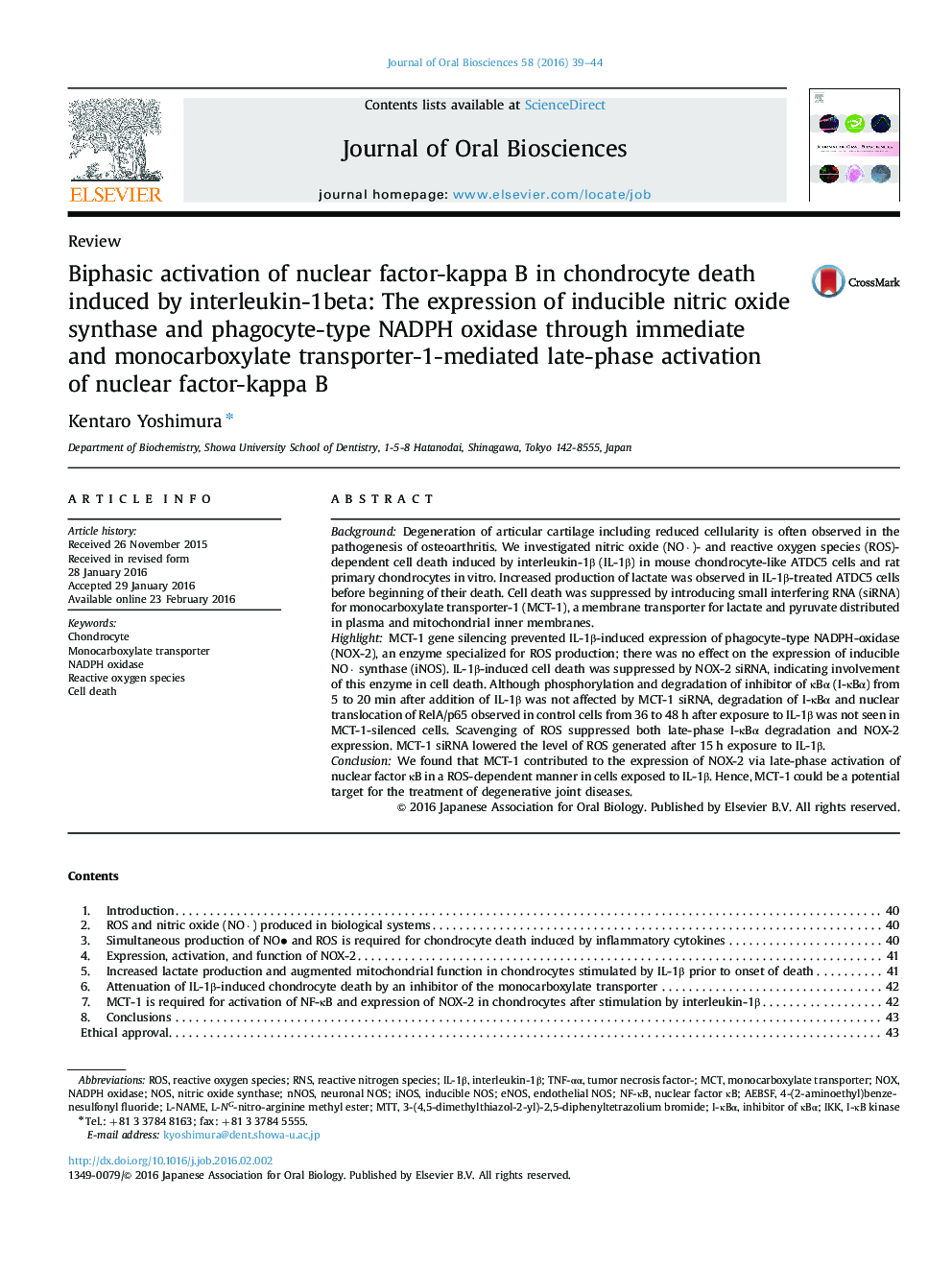| Article ID | Journal | Published Year | Pages | File Type |
|---|---|---|---|---|
| 2776772 | Journal of Oral Biosciences | 2016 | 6 Pages |
BackgroundDegeneration of articular cartilage including reduced cellularity is often observed in the pathogenesis of osteoarthritis. We investigated nitric oxide (NO·)- and reactive oxygen species (ROS)-dependent cell death induced by interleukin-1β (IL-1β) in mouse chondrocyte-like ATDC5 cells and rat primary chondrocytes in vitro. Increased production of lactate was observed in IL-1β-treated ATDC5 cells before beginning of their death. Cell death was suppressed by introducing small interfering RNA (siRNA) for monocarboxylate transporter-1 (MCT-1), a membrane transporter for lactate and pyruvate distributed in plasma and mitochondrial inner membranes.HighlightMCT-1 gene silencing prevented IL-1β-induced expression of phagocyte-type NADPH-oxidase (NOX-2), an enzyme specialized for ROS production; there was no effect on the expression of inducible NO· synthase (iNOS). IL-1β-induced cell death was suppressed by NOX-2 siRNA, indicating involvement of this enzyme in cell death. Although phosphorylation and degradation of inhibitor of κBα (I-κBα) from 5 to 20 min after addition of IL-1β was not affected by MCT-1 siRNA, degradation of I-κBα and nuclear translocation of RelA/p65 observed in control cells from 36 to 48 h after exposure to IL-1β was not seen in MCT-1-silenced cells. Scavenging of ROS suppressed both late-phase I-κBα degradation and NOX-2 expression. MCT-1 siRNA lowered the level of ROS generated after 15 h exposure to IL-1β.ConclusionWe found that MCT-1 contributed to the expression of NOX-2 via late-phase activation of nuclear factor κB in a ROS-dependent manner in cells exposed to IL-1β. Hence, MCT-1 could be a potential target for the treatment of degenerative joint diseases.
